 Air Forces arrive at designated area to join China-Russia drill
Air Forces arrive at designated area to join China-Russia drill
 High temperature hits Shanghai
High temperature hits Shanghai
 Old town Dali hosts int'l photography exhibition
Old town Dali hosts int'l photography exhibition
 Death toll rises to 29 in rain-related accidents across Pakistan
Death toll rises to 29 in rain-related accidents across Pakistan
 Baby returned to parents after allegedly being trafficked
Baby returned to parents after allegedly being trafficked
 Nutrica recalls Karicare infant formula in New Zealand
Nutrica recalls Karicare infant formula in New Zealand
 Sexy models in CFGP race
Sexy models in CFGP race
 Child labor still remains rampant in war-hit Afghanistan
Child labor still remains rampant in war-hit Afghanistan
 Sun Yang the star of last day at World Swimming Championships
Sun Yang the star of last day at World Swimming Championships
 |
| Qinhuai River (file photo) |
Qinhuai River
If you want to start the trip around Nanjing from its most prosperous spot, Qinhuai River is the place. As Nanjing’s mother river, Qinhuai River is the birthplace of its economy, culture and history.
Starting with the Eastern Jin Dynasty (317-420), the banks along the Qinhuai River were the place that the most powerful and noble families in the city and the whole country lived. Countless commercial boats sailed along the river, many scholars and poets gathered there, and lanterns of big mansions on its bank glowed all night long. The river soon became the most prosperous and bustling place in China. The Wang and the Xie families were among the prominent who lived there. Many spots along the river got their names from them. For example, Taoye Du (Taoye Ferry) got its name from a concubine of Wang Xizhi, the greatest calligrapher in Chinese history.
During the dynasties of the Ming as well as the Qing (1644-1911), Qinhuai River reached its peak. A famous red-light district was established along the river. The Confucius Temple was built on the busiest spot along the river, as was Jiangnan Examination Hall, the largest hall for imperial examinations in ancient China. During that time, painted boats with red lanterns shuttled along the river, attracting many writers to pay a visit here and create poems about the luxurious life and the beauties on the river.
Today, the area along Qinhuai River is still one of the busiest commercial areas in the city. The streets around the Confucius Temple have become a colorful pedestrian area where local people and visitors can buy all kinds of products and souvenirs. A cruise along the Qinhuai River, especially at night, is a must-try activity in Nanjing. Stepping into a painted boat — similar to the ancient ones dating back hundreds of years ago, is like stepping into history itself. Stages are built along the river bank, on which Peking Opera and traditional Chinese dance are performed.
For a Chinese visitor, the journey can be overwhelming as all the poems and stories learned about the old days suddenly come to life. The city walls, ancient bridges and gardens are almost the same as they used to be hundreds years ago, exactly like what Chinese ancestors used to see.
But looking up, tall buildings with modern restaurants, cafes and bars appear as a backdrop to the ancient river, creating mixed feelings of old and new.
 |  |
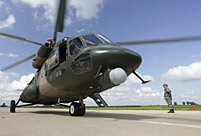 Air Forces arrive at designated area to join China-Russia drill
Air Forces arrive at designated area to join China-Russia drill 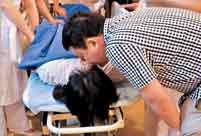 Hospital comes to aid of tragic family of ‘Chinese Cabbage Dad’
Hospital comes to aid of tragic family of ‘Chinese Cabbage Dad’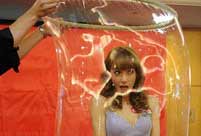 Czech artist performs bubble show at Hong Kong mall
Czech artist performs bubble show at Hong Kong mall  Italian Supreme Court confirms Berlusconi's jail verdict
Italian Supreme Court confirms Berlusconi's jail verdict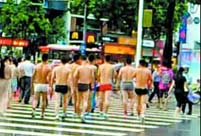 Run naked as punishment for missing sales target
Run naked as punishment for missing sales target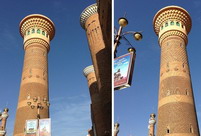 International Grand Bazzar in Urumchi,Xinjiang
International Grand Bazzar in Urumchi,Xinjiang  Chinese troops of "Peace Mission - 2013" arrive at exercise area
Chinese troops of "Peace Mission - 2013" arrive at exercise area Pakistan's rain-triggered accidents claim 29 lives: media
Pakistan's rain-triggered accidents claim 29 lives: media Anti-hijacking drill held on train in Wuhan
Anti-hijacking drill held on train in Wuhan Top 10 most dangerous jobs in the world
Top 10 most dangerous jobs in the world Zhang Ziyi graces Femina magazine
Zhang Ziyi graces Femina magazine Breathtaking images of extreme sports
Breathtaking images of extreme sportsDay|Week|Month